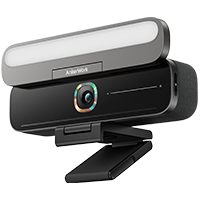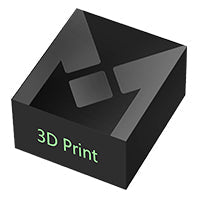USB (Universal Serial Bus) is a standard designed to connect devices and facilitate data transfer between them. It permits communication, charging and data exchange among gadgets such as keyboards, mice, smartphones and printers. In practice, USB appears in different connector types including USB-A, USB-B, USB Mini, USB Micro and USB-C. The following sections offer detailed explanations on the evolution of USB standards, the distinct port types and recommendations when purchasing USB cables.

What Are the Different Types of USB?
USB (Universal Serial Bus) cables vary in their plug types and USB standards. Continue reading to discover the different types of USB cables and their respective versions.
USB Standard Versions
Over time, USB standards have evolved to improve data speeds, power management and overall functionality. Each successive version brings new capabilities while maintaining backward compatibility with earlier models. The following outlines the key USB standard versions:
USB 1.0:
Introduced in 1996, this version operates at a maximum speed of 1.5 Mbps. Its functionality was primarily intended for basic data transfer tasks and initial device connectivity. Although now largely outdated, its introduction laid the groundwork for subsequent developments in USB technology.
USB 1.1:
Released in 1998, USB 1.1 increased the maximum transfer rate to 12 Mbps. It supplied power at 5V with a current cap of 500mA, which sufficed for fundamental devices, though it proved inadequate for charging or powering more complex hardware.
USB 2.0:
Launched in 2000, USB 2.0 offered speeds up to 480 Mbps and was fully backwards compatible with USB 1.1. It provided improved power management with up to 500mA of current delivery. This version quickly became the standard for many applications, ranging from external storage to printers, due to its robust performance and broad compatibility.
USB 3.0:
What is a USB 3 port? First appearing in 2008, USB 3.0 introduced significant improvements in data transfer, achieving speeds up to 5 Gbps–commonly referred to as "SuperSpeed." Alongside this leap in performance, USB 3.0 improved power delivery, offering up to 900mA. These features enabled a broader array of applications, from high-speed external storage to more efficient device charging.
USB 3.1:
Arriving five years after USB 3.0, USB 3.1 operates at speeds up to 10Gbps and is sometimes called "SuperSpeed+." It incorporates the USB Power Delivery (PD) protocol, which can supply up to 100W, making it suitable for powering larger devices such as laptops. This version further enhanced the reliability and performance of USB connections.
USB 3.2:
Introduced in 2017, USB 3.2 builds on the features of its predecessors. Depending on its configuration (Gen 1, Gen 2 or Gen 2x2), it offers speeds ranging from 5 Gbps to 20 Gbps. The increased speed is achieved by utilising two data lanes for improved throughput, while power delivery remains at 5V with currents up to 3A, equating to 100W.
USB4:
Released in 2019, USB4 marked a significant development by incorporating Thunderbolt 3 protocols. It achieves data transfer speeds of up to 40 Gbps and supports multiple protocols, including DisplayPort and HDMI, which facilitates higher resolution displays and flexible connections. The integration of these technologies makes USB4 particularly suited to high-performance applications like 4K video editing and large-scale data transfers.
USB4 v2:
The latest iteration, USB4 v2, launched in 2022, offers signalling rates up to 80Gbps. It continues to support power delivery of up to 100W and retains compatibility with Thunderbolt 3. These features ensure that USB4 v2 meets the demands of modern devices and high-performance computing environments, making it ideal for a diverse range of applications across the UK.

USB Port Types
USB ports come in several distinct forms, each tailored to specific functions and use cases. The following are the principal types of USB ports:
USB Type-A
USB Type-A connectors are the most recognisable form, typically seen on computers, printers and chargers. These rectangular connectors, usually black, accommodate data transfer according to USB 2.0 specifications at speeds up to 480 Mbps. In higher-standard cables, such as those supporting USB 3.0 or USB 3.2, the connector might appear in blue or red. This port is generally utilised for connecting peripheral devices to a computer system, making it a common feature in UK-based technology setups.
USB Type-B
Characterised by a square shape, USB Type-B connectors are primarily found on larger devices such as printers, scanners and external hard drives. Although less common in everyday consumer electronics, they are essential for applications requiring robust data transfer and a secure connection in devices that typically demand higher power and reliable data communication.
USB Micro-B
The Micro-B connector is a diminutive 5-pin design used mainly in smaller electronic devices. It is frequently encountered in older smartphones, power banks and game controllers. Despite its small size, the Micro-B port plays a critical role in ensuring reliable data transfer and power supply in compact devices, remaining prevalent in budget Android smartphones that have yet to adopt the newer USB-C standard.
USB Mini-B
Slightly larger than the Micro-B connector yet smaller than Type-B, USB Mini-B was once popular with digital cameras, certain smartphones and portable music players. Although its use is diminishing as more devices transition to Micro-B and Type-C connectors, the Mini-B connector still finds application in legacy equipment and certain specialised devices where space constraints and performance remain key considerations.
USB Type-C
Today, the USB-C port is the most common connector, particularly in modern laptops, smartphones and tablets. Featuring a reversible 24-pin plug, USB-C simplifies the process of connecting devices since it can be inserted in either orientation. USB-C supports high-speed data transfers, with speeds reaching up to 20Gbps for specific implementations. It is a cornerstone in contemporary technology, widely adopted by consumers and recommended in professional settings, including the range of Anker USB-C chargers, which offer safe and rapid charging solutions.
Presented below is a chart outlining the various USB connector types alongside the corresponding USB standards they comply with.
|
USB Type |
Shape |
Transfer Speed |
Power Delivery |
Common Use |
|
USB Type-A |
Rectangular |
USB 2.0: 480 Mbps USB 3.0: 5 Gbps |
Up to 2.5W (USB 2.0) Up to 4.5W (USB 3.0) |
External storage devices, keyboards, mice, printers. |
|
USB Type-B |
Square |
USB 2.0: 480 Mbps USB 3.0: 5Gbps |
2.5W |
Printers, scanners, external hard drives. |
|
USB Micro-B |
Smaller rectangular |
USB 2.0: 480 Mbps USB 3.0: 5 Gbps |
Up to 2.5W (USB 2.0) Up to 4.5W (USB 3.0) |
Smartphones, digital cameras, portable hard drives. |
|
USB Mini-B |
Smaller square |
USB 2.0: 480 Mbps |
2.5W |
Digital cameras, older smartphones, and MP3 players. |
|
USB Type-C |
Oval (Reversible) |
USB 3.1: 10 Gbps USB 3.2: 20 Gbps USB4: 40 Gbps USB4 v2: 80 Gbps |
Up to 100W |
Laptops, smartphones, tablets, gaming consoles. |
Considerations When Purchasing USB Cables
When selecting USB cables, several factors should be taken into account to ensure that the cable meets your specific requirements. The following points provide a structured overview of the key considerations:
- USB Type & Version:Check device specifications to match the required USB type, such as distinguishing between USB-C and Type-B connectors. Verify that the cable supports the necessary USB version (e.g., USB 3.0 for enhanced data transfer speeds). Additionally, ensure compatibility with modern port designs, including reversible USB-C interfaces commonly found in laptops and smartphones.
- Manufacturer Reliability:Prioritise cables from established brands that comply with manufacturing standards. Reputable manufacturers use high-grade materials and rigorous testing processes, reducing risks of electrical hazards. Look for certifications like BS 1363 to confirm adherence to safety regulations for plugs and connectors.
- Certification & Safety: Ensure cables carry UKCA or CE marks, validating compliance with UK Electrical Equipment Safety Regulations. Confirm testing under extreme conditions and check for lifetime warranties. Avoid uncertified products to prevent fire risks or device damage.
- Build Quality:Opt for braided cables over standard rubber coatings for superior durability, especially in high-stress environments. Select designs rated for 300,000+ bends and weatherproofing if used outdoors. Evaluate materials like recycled components to align with UK sustainability standards.
Conclusion
We trust this thorough article has resolved any uncertainties regarding different types of USB cables. Given the multitude of variants available, it is wise to become acquainted with each category and its specifications to choose the most appropriate option. Moreover, please take into account the earlier considerations when procuring USB cables so that you secure the optimal match for your requirements.
FAQ About Types of USB Cables
What is the fastest USB cable?
The fastest USB cable available is USB4 Version 2.0, which supports speeds up to 80 Gbps. To achieve these speeds, both the cable and connected devices must be USB4 2.0-compatible. High-quality active cables ensure maximum performance over longer distances.
What does SS mean on USB port?
SS on a USB port stands for SuperSpeed USB, first introduced in 2008 with USB 3.0. It significantly improved data transfer rates and power delivery compared to USB 2.0. Later, USB 3.1 Gen 2 arrived, offering even faster speeds and greater efficiency for modern devices.
Is a red USB better than a blue one?
USB ports come in different colours to indicate their capabilities. Black represents USB 2.0, offering standard high-speed transfers. Blue signifies USB 3.0, which delivers faster data rates. Red, usually USB 3.1 Gen 2 or 3.2, supports even higher speeds and often remains powered for charging devices, even when the main device is off.




















